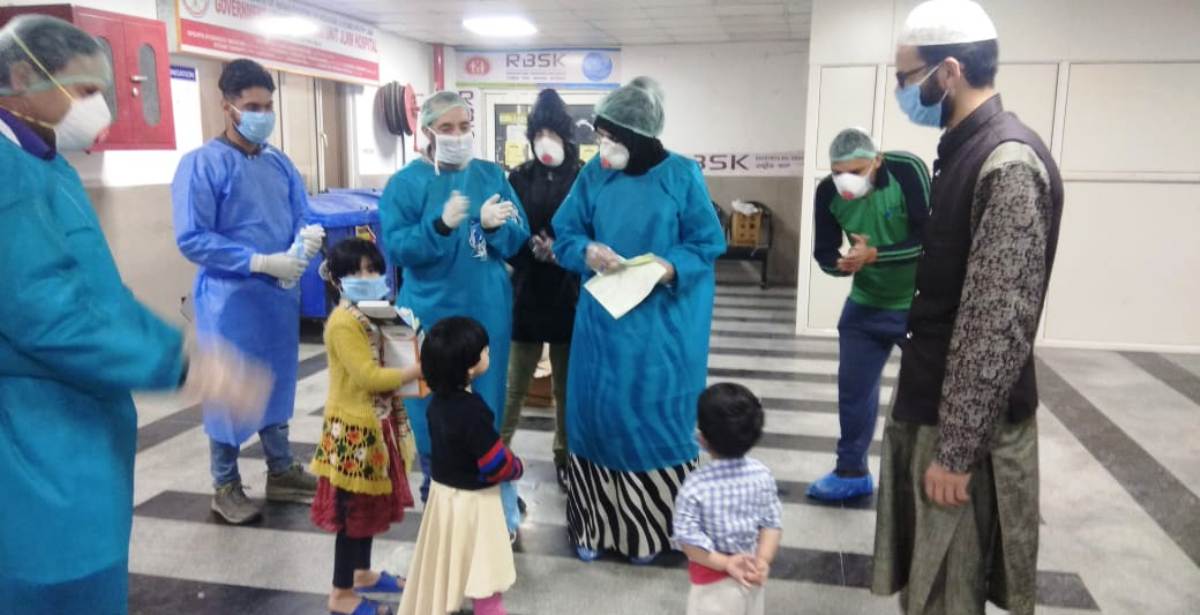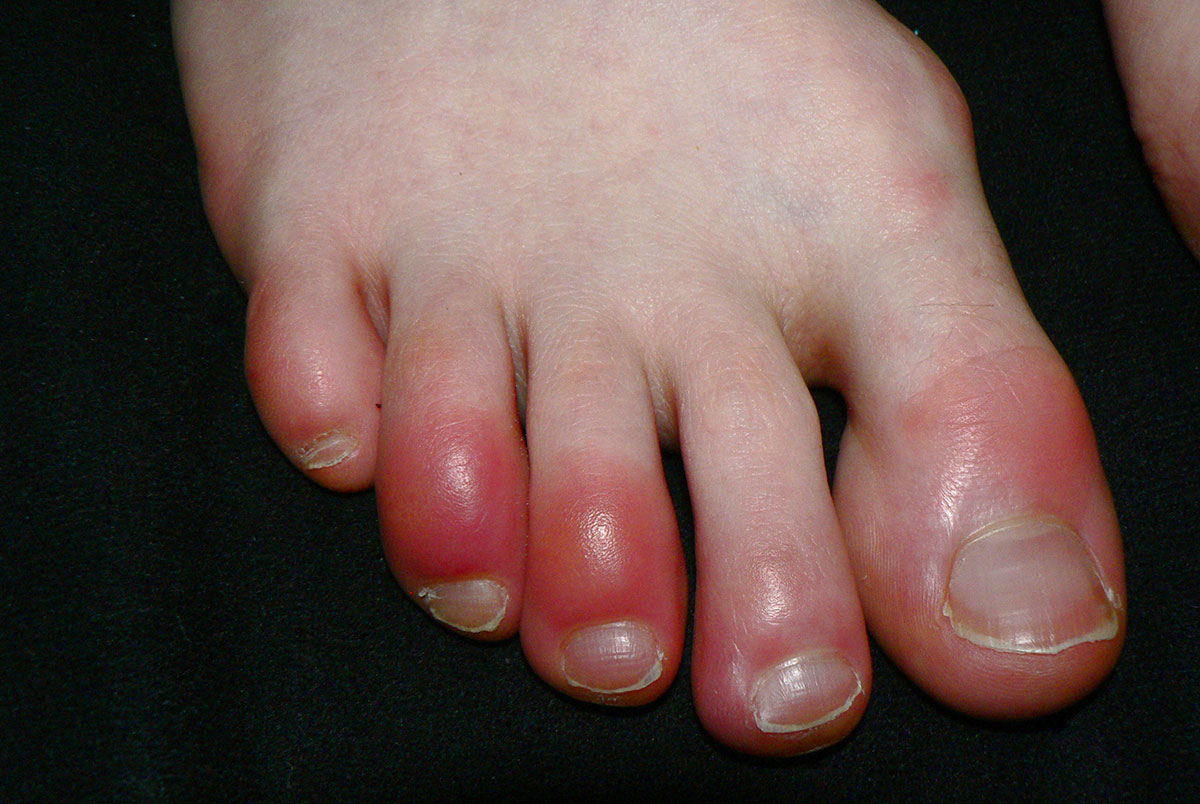by Sheikh Umar Ahmad
Since the advent of Coronavirus, we have seen different phases of advances in Covid-19 research with every day new facts being unearthed about this virus and how it hijacks the body. Among various other things about this virus that has surprised many of us is the diversity of symptoms, it causes in different populations differentially across the globe.

As most of the infectees are asymptomatic in nature, yet in those where symptoms appear, there is the differential response of the body to this virus and it can be believed that symptoms appear as per the individual response of the body to this virus in getting it neutralized.
Initially, the most common symptoms that we all were made to keep track of include cough, shortness of breath or difficulty breathing, chills, fever, muscle pain, the new loss of taste/smell or sore throat. Less common symptoms that were also reported in due course of time include nausea, vomiting or diarrhoea.
But with more intense research going on around the globe, new and surprising things came to fore of which Covid toes is the new surprising and ambiguous entry. Now many among you will be thinking of what these Covid toes actually are and how they look like.
These are simply Chilblains like symptoms, the painful red inflammations that are normally associated with exposure to cold air in winters. A similar condition has been showing up in Covid-19 patients. They usually appear after the respiratory symptoms and hold little promise in diagnostics but convey differential physiological response of patients to this virus. Although, it’s not the time of year for chilblains, appearing in reaction to cold or damp conditions and usually seen in the dead of winter. The lesions are emerging as yet another telltale symptom in Covid infection.
Federal health officials do not include toe lesions in the list of coronavirus symptoms, but some dermatologists are pushing for a change. Several papers from Spain, Belgium and Italy described a surge in complaints about painful lesions on patients’ toes, Achilles’ heels and soles of the feet, contradicting with the disease condition itself because they were otherwise looking normal and some were even reported negative upon testing. Most cases have been reported in children, teens and young adults, and some experts are of opinion that they may reflect a healthy immune response to the virus and among those who were subsequently found positive for Covid were found doing extremely well.
 In any case, doctors consider it a good sign that your body has seen Covid and is making a good immune reaction to it. Though it is important to remember that the most common symptoms of Covid-19 are respiratory and flu-like symptoms as mentioned above. While Covid toes and rashes have been recently associated with the onset of coronavirus disease but that these symptoms haven’t been widespread so far and should be taken positively as they appear very late in the disease progression as doctors across globe explain it.
In any case, doctors consider it a good sign that your body has seen Covid and is making a good immune reaction to it. Though it is important to remember that the most common symptoms of Covid-19 are respiratory and flu-like symptoms as mentioned above. While Covid toes and rashes have been recently associated with the onset of coronavirus disease but that these symptoms haven’t been widespread so far and should be taken positively as they appear very late in the disease progression as doctors across globe explain it.
Covid toes though is affecting a small group of the population infected with Coronavirus and one must keep in mind that respiratory symptoms are the most commonly appearing and those are the things that people should be keeping on their radar while not sidelining this symptom and of the least occurring symptoms while dealing with this dreaded disease. These newer symptoms emerging are thought to appear as how people behave and react to infections differently in different ways but are not actually new in the realm of viral infections as some doctors believe, while others who are dealing with Covid patients think of it as being Covid specific response of the body to the virus.
Though it is common to have a rash or blotchy area on the skin upon contracting any viral infection and sometimes also appear on taking antibiotics. Right now, some of the doctors have consensus that it’s a form of manifestation and it is still not very clear as of now what causes it and best way to tackle this disease is to get tested if you find any unusual symptom not experienced earlier.
Five dermatological manifestations including Covid toe, are affecting some hospital patients diagnosed with Covid-19, a small study by Spanish doctors have found and published in the British Journal of Dermatology. The rashes tend to appear in younger people and last several days, but the researchers said they were surprised to see so many varieties of rashes with Covid-19 although rashes are not currently included in the list of symptoms of the illness.
The five rashes were:
Asymmetrical, chilblain-like lesions around the hands and feet, which could be itchy or painful. Generally found in younger patients, lasted on average 12 days, appeared later on in the course of the disease, and were associated with mild infections. Accounted for 19% of cases.
Outbreaks of small blisters, often itchy, found on the trunk and limbs. These were found in middle-aged patients, lasted around 10 days, and appeared before other symptoms (9%)
Pink or white raised areas of skin that looked liked nettle rash, and often itchy. Mostly on the body but sometimes on the palms of the hands (19%)
Maculopapular – small, flat and raised red bumps. These accounted for 47% of cases. They lasted around seven days and appeared at the same time as other symptoms but tended to be seen in patients with more severe infections.
Livedo (also known as necrosis) was present in 6% of cases. The skin looked blotchy red or blue, with a net-like pattern. It’s a sign of poor blood circulation. This appeared in older patients with severe illness.
The relevance of this study is not so much in helping people self-diagnose, but rather to help build our wider understanding of how the infection can affect people and how people are responding to this disease, says Dr Ruth Murphy, president of the British Association of Dermatologists. With Covid-19, rashes and skin ulcers have been noted in a few per cent of hospitalized patients but the extent of these links, or precisely why this inflammation occurs in some patients but not others is not yet fully known.

The American Academy of Dermatology is also compiling a register of skin symptoms seen by its members. Making up half of all reports filed by skin doctors around the world to this new international registry started by the American Academy of Dermatology, which is tracking the complications. No one knows exactly why the new coronavirus might cause chilblain-like lesions. Is it a positive sign? Only time will tell as more facts are unearthed.
There are various hypothesis’s put forth to justify their appearance in Covid patients. But as of now, it is more unclear why and how such things appear.
(The author is a Senior Research Fellow (DST INSPIRE) at CSIR-Indian Institute of Integrative Medicine Jammu. The opinions expressed in this article are those of the author’s and do not purport to reflect the opinions or views of Kashmir Life.)















